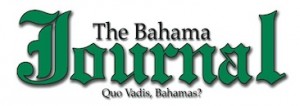The Central Bank of The Bahamas announced plans to eliminate the one cent coin by 2020 following recommendations of a study on the issuance, demands and use of the penny.
“The proposal is that the one cent coin should cease to be legal tender with effect from December 31, 2020. If the one cent coin is eliminated, the five cent coin will be the lowest denomination issued. Electronic payments made, for instance, by debit and credit cards, will not be affected by this initiative. However, cash payments will be rounded off to the nearest five cents,” The Central Bank said in a statement on Wednesday.
Last year, The Central Bank, assisted by Secura Monde International as consultants for the initiative, commissioned a study to examine the need for continued issuance of the one cent coin, considering the use of, demand for and cost of producing and issuing the coin.
Without the one cent coin, the proposed rounding rules, which The Central Bank explained is “simple and fair for all” would be applied to bills paid in cash.
“Where a total bill is being paid in cash and the number of cents to be paid does not end in zero or five, thus requiring either the customer to use one cent coins in payment or the retailer to use such coins in giving change, the amount of change to be paid will be rounded to the nearest five or 10 cents,” The Central Bank explained.
“One and two would be rounded down to zero (e.g. $4.21 becomes $4.20). Three and four would be rounded up to 5 (e.g. $7.23 becomes $7.25). Six and seven would be rounded down to 5 (e.g. $15.67 becomes $15.65). Eight and nine would be rounded up to 10 (e.g. $27.89 becomes $27.90).
“It is important to note that rounding only takes place on the total bill, not on individual prices. As such, prices should not be changed in advance and existing price points (such as with items priced at 99 cents) should remain.”
However, the amount of value added tax paid is unaffected by rounding.
“VAT is calculated on the amount charged for taxable supplies. Rounding should take place after the VAT is calculated on a bill and only when the customer is paying the total amount of an invoice in cash or paying the balance of an invoice in cash. If the customer is paying the total bill with cash and card, an amount rounded to the nearest five cents should be paid in cash and the remaining odd amount paid by card. For example, a total bill of $23.39 could be paid with $3.00 in cash and $20.39 by card,” The Central Bank added.
It was noted that before the rounding becomes effective, retailers should indicate the applicable rules of rounding through appropriate in-store signage and The Central Bank promised to make the signage available in the form of stickers and posters for in-store display to any retailer, regardless of size.
“Should some retailers prefer to develop their own signage, the necessary imagery will be made available for download by The Central Bank in advance of the withdrawal date. If larger stores require significant quantities of physical material, they should notify The Central Bank in advance,” the statement read.
“Service fees connected with bank transactions and the proceeds of cheques cashed at the counter should be rounded in accordance with the established rules.”
The one cent coin denomination of the Bahamian currency has been in circulation since 1966.
According to The Central Bank, in over 50 years of circulation, the one cent coin has lost around 90 percent of its purchasing power, while the cost of its production and administration grew in line with inflation and now exceeds its face value.
“The current value of these coins is so small that essentially no goods or services can be purchased with them. The only remaining utility of these coins is to give change in larger payment transactions. Once the coins are given to the consumers as change, they are rarely used in subsequent transactions, which leads to large volumes of new coins being issued every year to compensate for poor circulation of this denomination,” The Central Bank said.
“There are clear signs that the one cent coin is used increasingly rarely by the general public as a means of payment. According to the Central Bank’s surveys, only about half of the population (52 percent) regularly uses the one cent coin for making payments. This share is much lower (40 percent) for the younger consumers (age 16-34), likely related to generally lower usage of cash for payments in this age group. Over three quarters (78 percent) of the consumers never or rarely return accumulated one cent coins to the banks or post offices. Only about a third (39 percent) of the retailers and the banks regularly receive one cent coins in the course of their business. There is a clear concern over the cost of handling one cent coins. A significant majority (61 percent) of businesses estimates it to be equal or higher than the face value of the coin.”


